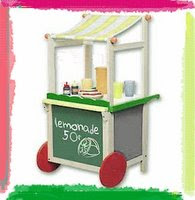Thursday, February 24, 2011
Having Trouble Getting The Kids to Bed?
Follow this link to get great ideas for making bedtime easier.
Tuesday, February 15, 2011
15 Signs Your child May Have ADHD
Ever wonder if ADHD has specific symptoms and behaviors? Well, here's a site that will answer your questions.
Wednesday, February 9, 2011
February 2011 Math Lesson-Graphing
Now that we have covered patterning and sorting in previous lessons, we move this month to graphing. Gathering data and interpreting the results are very important mathematical skills that children need to be comfortable with as they progress through the grades. This is always a fun topic since it can be used with so many different materials. Since we are fast approaching Valentine's Day, I decided to use candy hearts as my hands on material for this graph. This lesson is appropriate for children through first or second grade.
First, give your child an assortment of candy hearts. You may want to choose your colors carefully, as you will see later in this lesson. Have them sort by color.
Next, make a graph on plain paper. Have your child place numbers in the left column starting with 1 and the bottom going upwards until they reach 10. (You can go higher if you have given them more than ten of any one color candy).
Next, have them color the bottom square in each column to match each color candy in their bag. You can refer to my first picture to see how it should look.
Next, using 1 to 1 correspondence, have them color one square for each candy they have.
Then, have them make observations about what their graph shows.
Finally, have them write what those observations are, using words such as most, least, more than, less than, one more than, one less than, equal, plus, minus, difference, and all together. Older children can use the symbols +, -, =, >, and <
In my sample, the sentences labeled with an "a" are the ones that would be made by younger children, while the "b" would be the comments or equations used by older children. You can prompt them to figure out more.
The reward can be that you get to eat the materials after you have completed the lesson! This can be done again with greater amounts in the spring with jelly beans, or any time of year with M & M's or any candies that come in lots of colors. Remember, Math is fun.
First, give your child an assortment of candy hearts. You may want to choose your colors carefully, as you will see later in this lesson. Have them sort by color.
Next, make a graph on plain paper. Have your child place numbers in the left column starting with 1 and the bottom going upwards until they reach 10. (You can go higher if you have given them more than ten of any one color candy).
Next, have them color the bottom square in each column to match each color candy in their bag. You can refer to my first picture to see how it should look.
Next, using 1 to 1 correspondence, have them color one square for each candy they have.
Then, have them make observations about what their graph shows.
Finally, have them write what those observations are, using words such as most, least, more than, less than, one more than, one less than, equal, plus, minus, difference, and all together. Older children can use the symbols +, -, =, >, and <
In my sample, the sentences labeled with an "a" are the ones that would be made by younger children, while the "b" would be the comments or equations used by older children. You can prompt them to figure out more.
The reward can be that you get to eat the materials after you have completed the lesson! This can be done again with greater amounts in the spring with jelly beans, or any time of year with M & M's or any candies that come in lots of colors. Remember, Math is fun.
Wednesday, February 2, 2011
Subscribe to:
Posts (Atom)











